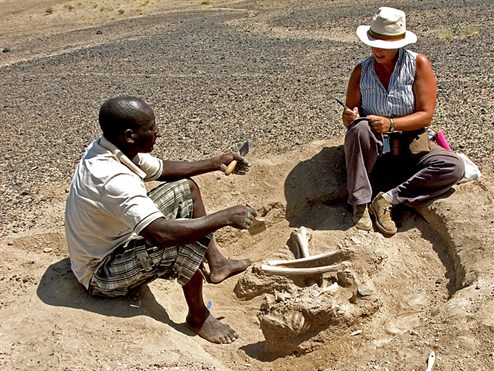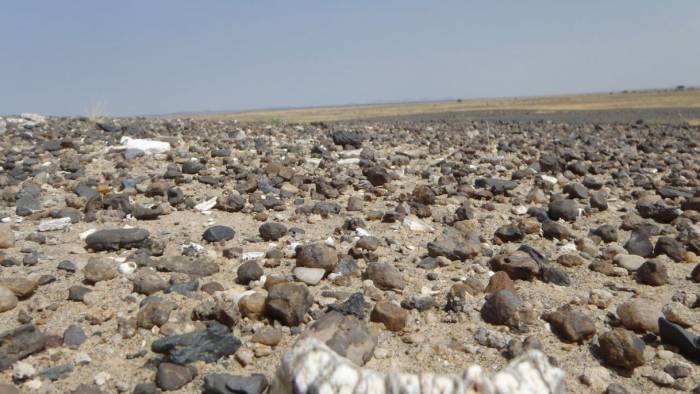
source
10,000-year-old fossils were discovered on the shore of Lake Turkana in Kenya. A team of scientists from Cambridge University was surprised to see the condition of the remains – smashed skulls, skeletons that were clearly shot or stabbed. This evidence suggests that very violent deaths occurred. The scene shows that there was warfare among prehistoric hunter-gatherers, which is nearly unheard of.
A violent scene
The site was first discovered in 2012 but was just published in the journal Nature. The scene, 30 kilometers from Lake Turkana in northern Kenya, shows an incredibly violent exchange. One man had a blade fragment lodged in his skull, the right side of his face and head smashed, and broken knees. Another man had two breaks in his skull. And there was a woman who was 6 to 9 months pregnant, with the fetus’ skeleton still inside her body. She was also killed by a head injury. Her body position suggests that she was tied up prior to being killed. Others had injuries on their heads and necks most likely caused by arrows; six of the bodies were children.

What happened here?
This is the earliest evidence of a violent confrontation among nomadic hunter-gatherers. War tends to occur only in more complex and settled societies. Marta Mirazón Lahr led the team, who led the team, guessed:
“The Nataruk massacre may have resulted from an attempt to seize resources – territory, women, children, food stored in pots – whose value was similar to those of later food-producing agricultural societies among whom violent attacks on settlements became part of life.”
The area around the lake had been very fertile at the time, and the pottery found at the site suggests the people were storing food. The team noted that there were no remains of older children. They might have been taken as captives.

Tracing the origin of human war
Humans have always been violent, but when did it escalate to war? Experts have been debating this question for years.
“Evidence for inter-group violence among prehistoric hunter-gatherers is extremely rare,” Lahr said. “These human remains record the intentional killing of a small band of foragers with no deliberate burial, and provide unique evidence that warfare was part of the repertoire of inter-group relations among some prehistoric hunter-gatherers.”
She argued that this type of violence may have been typical at the time.
The co-author of the study, Professor Robert Foley, said:
“I’ve no doubt it is in our biology to be aggressive and lethal, just as it is to be deeply caring and loving. A lot of what we understand about human evolutionary biology suggests these are two sides of the same coin.”
There are some who are skeptical of the conclusions. Douglas P. Fry, a professor of anthropology at the University of Alabama, said that more evidence is needed to classify this as war. He would like to see things like forts, villages built in defensible locations, specialized war weapons, or artistic depictions of battles before calling it warfare.

SEE ALSO: A New Species Of Early Humans Was Discovered In South Africa.






